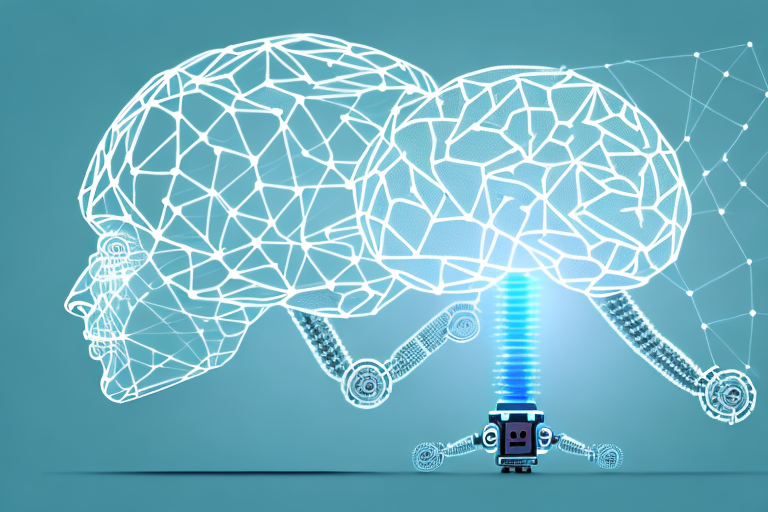Machine learning is an increasingly popular field that has revolutionized the way we use artificial intelligence (AI) and computer science. It is a subset of AI that involves the use of algorithms and statistical models to enable machines to learn from data without being explicitly programmed. The primary goal of machine learning is to develop algorithms that can learn from and make predictions or decisions based on data, similar to how humans learn from experience.
Machine learning has become ubiquitous in our daily lives, from fraud detection in banking to personalized recommendations on social media platforms, and as it continues to evolve, it has already become a critical tool in various industries, including healthcare, finance, and transportation. With the rise of big data, machine learning is becoming more important than ever, as it provides a way to extract insights and knowledge from vast amounts of data. In this article, we will explore the basics of machine learning, its applications, and the different types of machine learning algorithms.
What is Machine Learning?
Machine learning is a subfield of artificial intelligence that enables machines to learn from data, without being explicitly programmed. It involves the development of algorithms that can automatically recognize patterns in data and use these patterns to make predictions or decisions.
Definition
According to MIT Sloan, "Machine learning is a method of teaching computers to make and improve predictions or behaviors based on some data." This means that machine learning algorithms are designed to learn from data, and to use that learning to make predictions or decisions based on new data they encounter.
Types of Machine Learning
There are three main types of machine learning: supervised learning, unsupervised learning, and reinforcement learning.
- Supervised Learning: This type of machine learning involves training a model on labeled data, where the correct answer is already known. The model learns to recognize patterns in the data, and can then make predictions on new, unseen data.
- Unsupervised Learning: In unsupervised learning, the model is given unlabeled data and must find patterns and structure on its own. This type of learning is useful for discovering hidden structures and relationships in data.
- Reinforcement Learning: Reinforcement learning involves training an agent to make decisions in an environment, where it receives feedback in the form of rewards or punishments. The agent learns to take actions that maximize its reward over time.
Overall, machine learning is a powerful tool that can be used to automate decision-making, improve efficiency, and gain insights from data that would be difficult or impossible for humans to discover on their own.
Applications of Machine Learning
Machine learning has a wide range of applications across various industries. Here are some examples of how machine learning is being used in different sectors:
Industry
Machine learning is being used in the manufacturing industry to optimize production processes, reduce downtime, and improve product quality. By analyzing large amounts of data, machines can identify patterns and make predictions that help manufacturers make informed decisions about everything from supply chain management to inventory control. For example, machine learning algorithms can analyze sensor data from machines on the factory floor to predict when maintenance is needed, reducing downtime and increasing efficiency.
Healthcare
Machine learning is being used in healthcare to improve patient outcomes, reduce costs, and increase efficiency. By analyzing large amounts of patient data, machines can identify patterns and make predictions that help doctors make more accurate diagnoses and develop more effective treatment plans. For example, machine learning algorithms can analyze medical images to identify tumors or other abnormalities, helping doctors make more accurate diagnoses and develop more effective treatment plans.
Finance
Machine learning is being used in finance to improve fraud detection, risk management, and customer engagement. By analyzing large amounts of financial data, machines can identify patterns and make predictions that help financial institutions make informed decisions about everything from loan approvals to investment strategies. For example, machine learning algorithms can analyze transaction data to identify fraudulent activity, helping financial institutions detect and prevent fraud.
How Machine Learning Works
Machine learning is a complex process that involves several steps. These steps include data collection, data preprocessing, model training, and model evaluation. Here is a brief overview of each step:
Data Collection
The first step in machine learning is data collection. This involves gathering a large amount of relevant data that will be used to train the model. The data can come from a variety of sources, including databases, websites, and sensors. It is important to ensure that the data is accurate, relevant, and unbiased.
Data Preprocessing
Once the data has been collected, the next step is data preprocessing. This involves cleaning and preparing the data for use in the model. The data may need to be formatted, transformed, or normalized to ensure that it is consistent and can be used effectively. Data preprocessing is a crucial step in machine learning, as it can have a significant impact on the accuracy and effectiveness of the model.
Model Training
After the data has been preprocessed, the next step is model training. This involves selecting an appropriate algorithm and using the preprocessed data to train the model. The algorithm will analyze the data and identify patterns, which it will use to make predictions or decisions. Model training can be a time-consuming process, as it often requires large amounts of data and computational resources.
Model Evaluation
Once the model has been trained, the final step is model evaluation. This involves testing the model to ensure that it is accurate and effective. The model may be tested using a separate set of data that was not used in the training process. Model evaluation is important to ensure that the model is reliable and can be used to make accurate predictions or decisions.
Challenges and Limitations
While machine learning has made significant strides in recent years, there are still several challenges and limitations that must be addressed to fully realize its potential.
Data Quality
One of the biggest challenges facing machine learning is the quality of the data used to train algorithms. Poor quality data can lead to inaccurate predictions and flawed decision-making. In some cases, data may be incomplete, inconsistent, or biased, which can skew results and lead to unintended consequences.
One way to address this challenge is to implement rigorous data cleaning and preprocessing techniques to ensure that data is accurate, consistent, and unbiased. Additionally, machine learning algorithms can be designed to identify and correct errors in the data, or to weight data differently based on its quality or reliability.
Interpretability
Another challenge facing machine learning is interpretability. Machine learning algorithms can be incredibly complex, making it difficult to understand how they arrive at their predictions or decisions. This lack of transparency can be problematic in certain contexts, such as healthcare or finance, where decisions can have significant consequences for individuals and society as a whole.
To address this challenge, researchers are working on developing more interpretable machine learning algorithms that can provide insights into how they arrive at their predictions or decisions. This can involve using techniques such as decision trees or rule-based systems, which provide a clear and transparent framework for decision-making.
Hardware Requirements
Finally, machine learning algorithms can be computationally intensive, requiring significant amounts of processing power and memory. This can be a challenge for organizations with limited resources or outdated hardware. Additionally, the energy consumption of machine learning algorithms can be a concern in certain contexts, such as mobile devices or data centers.
To address this challenge, researchers are working on developing more efficient machine learning algorithms that can run on low-power devices or in resource-constrained environments. Additionally, advancements in hardware, such as the development of specialized processing units for machine learning, can help to improve the efficiency and performance of machine learning algorithms.









